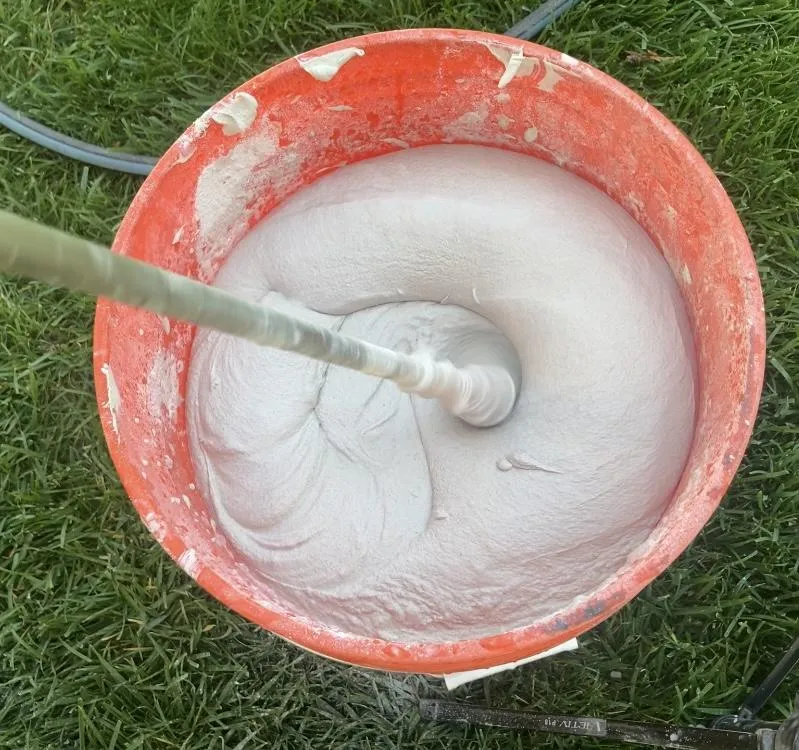
Thinset 101: Choosing the Right Adhesive for Your Tile Project
TL;DR
Thinset is the adhesive that bonds tile to a surface.
Non-modified thinset works well with uncoupling membranes and some ceramic tiles.
Medium-bodied modified thinset is the best all-around option for most applications.
Pool Set thinset is ideal for outdoor and high-moisture areas.
Specialty thinsets are available for porcelain, marble, and areas requiring extra flexibility.
Always follow manufacturer instructions and check bond coverage to ensure a long-lasting installation.
Thinset 101: Choosing the Right Adhesive for Your Tile Project
Picking the right thinset is just as important as choosing the perfect tile.
With so many options available, it can be overwhelming to know which one is best for your project.
This guide breaks down the different types of thinset, their best uses, and some key tips to ensure a long-lasting installation.

What Is Thinset and Why Does It Matter?
Thinset is a cement-based adhesive that bonds tile to a surface like cement board or concrete.
It comes in different formulations, each designed for specific applications.
Using the right type ensures a strong, long-lasting bond, while using the wrong one can lead to issues like tile failure, cracking, or poor adhesion.
Types of Thinset: Which One Is Right for Your Project?
Not all thinsets are created equal.
Here’s a breakdown of the most common types and where they work best:
Non-Modified Thinset – This thinset is mixed with water and contains no added polymers. It’s the go-to choice for uncoupling membranes like Schluter®-DITRA and works well for certain ceramic tile installations. However, since it lacks extra flexibility, it’s best for applications where movement isn’t a concern.
Medium-Bodied Modified Thinset – This is the all-around go-to thinset for most tile applications. It contains added polymers for better adhesion and flexibility, making it suitable for larger tiles, preventing sagging on vertical surfaces, and providing a strong bond for general installations.
Pool Set Thinset – Outdoor projects like patios, pools, and areas exposed to extreme weather require a high-bond-strength thinset. Pool Set is designed to withstand moisture, temperature fluctuations, and heavy use without breaking down over time.
Specialty Thinsets for Unique Applications
Some tiles require specialty thinsets designed to meet their specific needs. Here are a few:
Porcelain Tile Thinset – Since porcelain is dense and non-porous, it requires a thinset with extra bonding strength to ensure a secure hold.
Marble and Stone Thinset – Natural stone and marble can be prone to staining, so they need a white, non-staining thinset that won’t discolor the material.
High-Flexibility Thinset – Some installations, like tiling over plywood subfloors or in areas where movement is expected, require a more flexible thinset that can handle slight shifts without cracking.
Follow Manufacturer’s Directions and Check Bond Coverage
The best thinset in the world won’t work if it’s not applied correctly.
Always follow the manufacturer’s instructions for mixing ratios, application, and cure times.
Another crucial step is checking your bond coverage.
For a secure installation, thinset should make solid contact with both the tile and the substrate.
Ideally, you should have 85-95% coverage, especially for large-format tiles.
Every few tiles, lift one up to check coverage—this simple step can prevent major headaches down the road.
Final Thoughts
Choosing the right thinset is key to a successful tile installation.
Whether you’re working with ceramic, porcelain, stone, or outdoor tile, using the correct adhesive ensures your project lasts.
And remember, the best thinset won’t help if it’s not applied properly—so follow the instructions and check your coverage for a flawless finish!